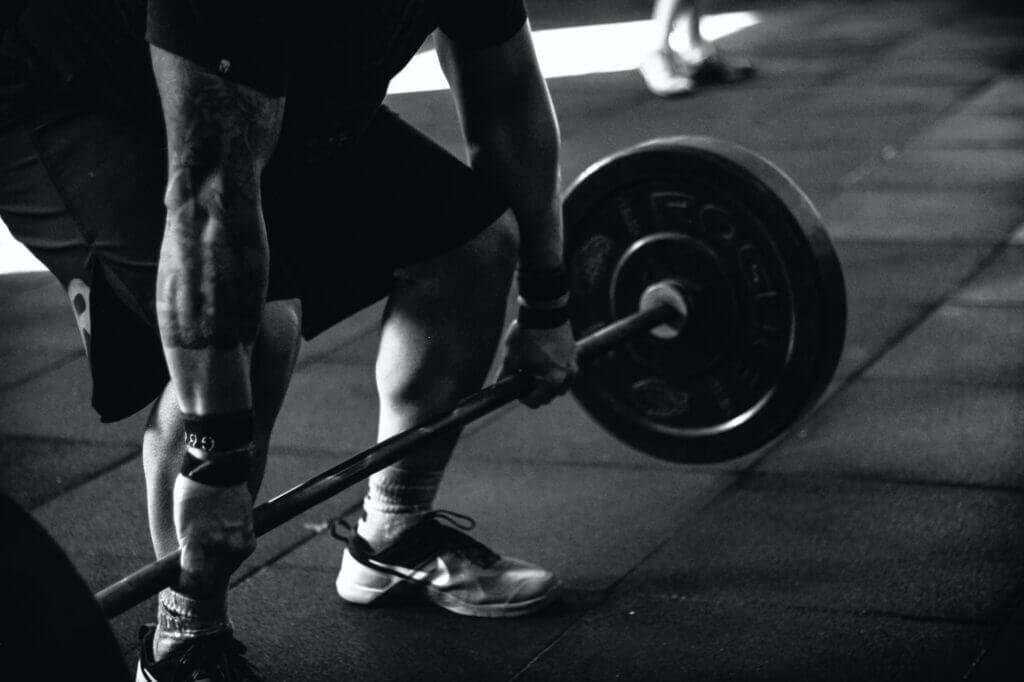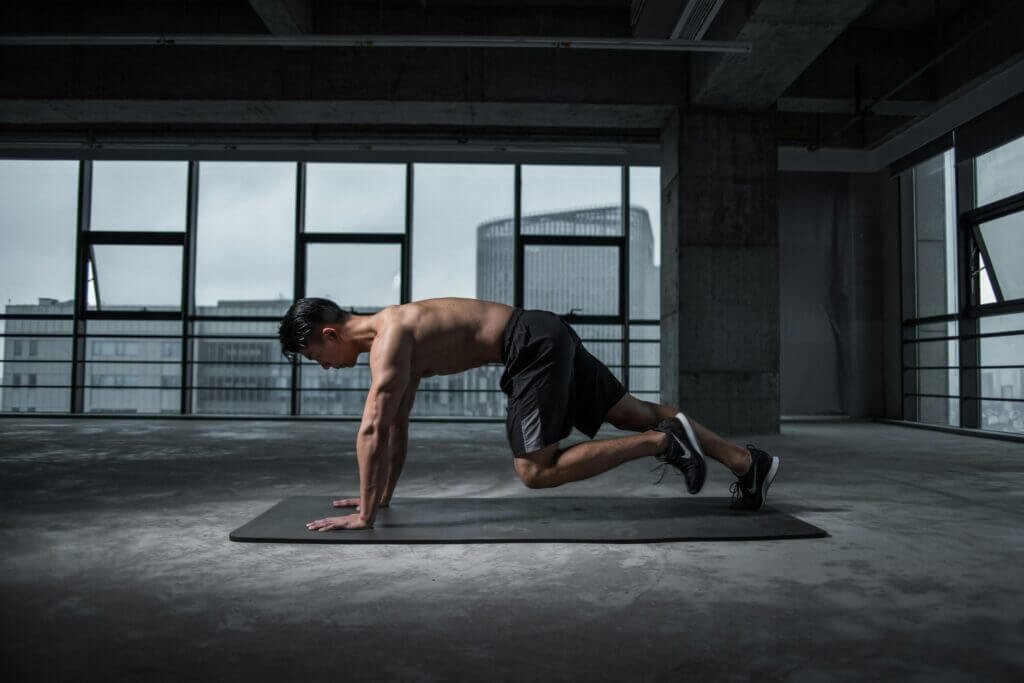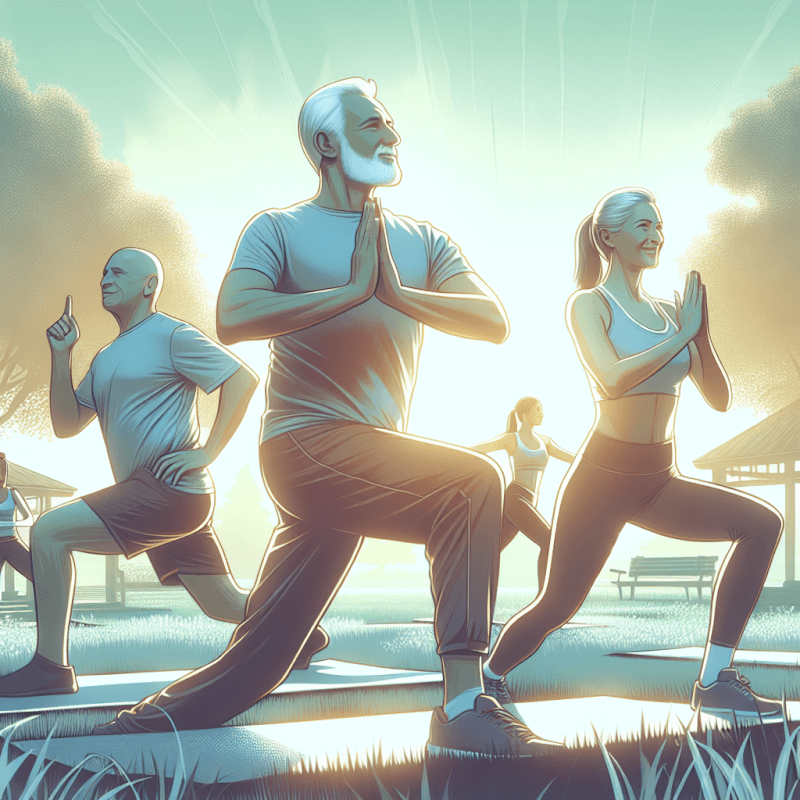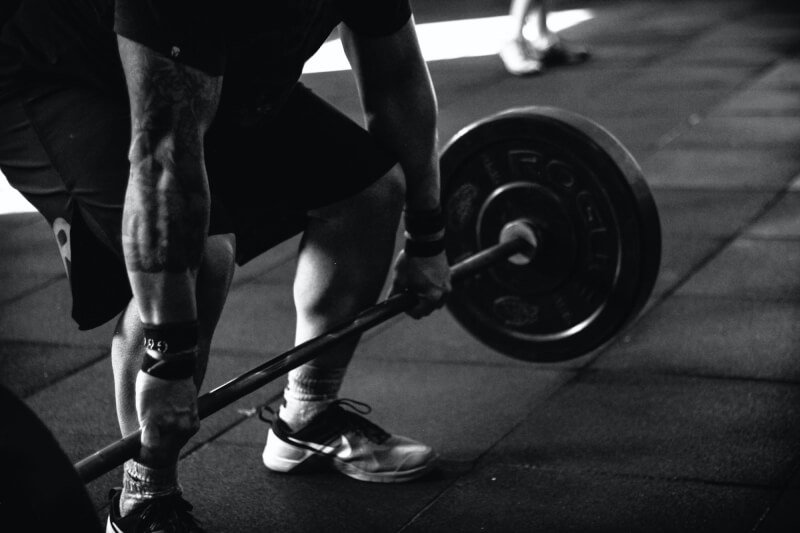Are you in your 50s and looking to get back into exercise? Getting started can sometimes feel daunting, especially if it’s been a while since you’ve been active. But fear not, because this article is here to guide you through the process. In just a few minutes, you’ll discover simple yet effective tips to help you begin your fitness journey and reclaim your physical well-being. So, grab a cup of tea, sit back, and let’s explore how to start exercising again at 50.
Prioritize Your Health and Fitness
Understand the Importance of Exercise for Aging Bodies
As you enter your 50s, it becomes increasingly important to prioritize your health and fitness. Regular exercise offers numerous benefits for aging bodies, such as maintaining muscle mass, reducing the risk of chronic diseases, improving balance and flexibility, and boosting overall mental well-being. Understanding the importance of exercise for your body as you age is the first step towards leading a healthy and active lifestyle.
Set Specific Health and Fitness Goals
To make your exercise journey more effective and rewarding, it’s crucial to set specific health and fitness goals. Whether you want to lose weight, increase muscle strength, improve cardiovascular health, or simply enhance your overall well-being, setting clear goals will help you stay motivated and focused. Be realistic in your goal-setting and consider consulting with a healthcare professional to ensure that your objectives align with your current health status.
Create a Realistic Plan for Incorporating Exercise into Your Life
Once you’ve established your health and fitness goals, it’s time to create a realistic plan for incorporating exercise into your daily life. Consider your schedule, commitments, and personal preferences when designing your exercise routine. Start with small, manageable steps and gradually increase the intensity and duration of your workouts. Remember, consistency is key, so try to find a balance that works for you and commit to sticking to your plan.
Consult with a Healthcare Professional
Get a Thorough Check-Up
Before embarking on any exercise program, it is essential to consult with a healthcare professional, especially if you haven’t been active in a while or have any pre-existing health conditions. Schedule a thorough check-up to assess your overall health and discuss any concerns or limitations that may affect your exercise routine. This will help ensure that you are taking appropriate measures to protect your body and optimize your exercise experience.
Discuss Your Exercise Plans and Goals
During your consultation, make sure to discuss your exercise plans and goals with your healthcare professional. They can provide valuable advice on tailoring your routine to suit your specific needs and capabilities. Your healthcare professional may recommend certain exercises or modifications based on your current health status, which can help prevent injuries and maximize the benefits of your workouts.
Consider Any Existing Health Conditions or Injuries
When discussing your exercise plans, it is important to disclose any existing health conditions or injuries to your healthcare professional. This information will help them guide you towards activities that are safe and suitable for your body. By taking into account your limitations, your healthcare professional can assist you in finding alternative exercises or techniques that can accommodate your individual circumstances.

Choose Activities Suitable for Your Age and Fitness Level
Focus on Low-Impact Exercises
As an aging individual, focusing on low-impact exercises can be beneficial in reducing the risk of joint pain or injury. Activities such as walking, swimming, cycling, or using an elliptical machine are gentle on the joints while providing the necessary cardiovascular benefits. Low-impact exercises also help improve bone density, strengthen muscles, and maintain joint flexibility, all of which are essential for healthy aging.
Consider Strength Training to Maintain Muscle Mass
Maintaining muscle mass is crucial as you age, as it can help support joint health, improve metabolism, and enhance overall physical performance. Including strength training exercises in your routine can help combat age-related muscle loss and promote strength and stability. Start with light weights or resistance bands and gradually increase the intensity as you gain strength and confidence.
Incorporate Flexibility and Balance Exercises
Flexibility and balance are key components of a well-rounded exercise routine for aging bodies. Activities such as yoga, tai chi, or Pilates can help improve flexibility, enhance posture, and increase body awareness. These exercises also contribute to better balance, reducing the risk of falls and improving overall stability. Including stretching exercises in your routine can also help alleviate muscle stiffness and increase range of motion.
Engage in Cardiovascular Activities for Heart Health
Cardiovascular exercise is essential for maintaining heart health and overall fitness. Engaging in activities that elevate your heart rate, such as brisk walking, jogging, dancing, or aerobics, helps improve cardiovascular endurance and burn calories. Aim for at least 150 minutes of moderate-intensity cardiovascular exercise per week, or 75 minutes of vigorous-intensity exercise, spread across several sessions.
Start Slowly and Gradually Increase Intensity
Begin with Gentle Exercises or Activities
Starting your exercise journey after a period of inactivity can be daunting, but it’s important to begin slowly and gently. Choose exercises or activities that allow you to ease back into physical activity without overwhelming your body. Walking, swimming, or practicing yoga are great options for those starting out, as they provide a low-impact and accessible way to get moving.
Increase Duration or Intensity of Workouts Gradually
As your body adjusts to regular exercise, it’s important to gradually increase the duration or intensity of your workouts. Pushing yourself too hard, too soon, can lead to injuries or burnout. Aim to gradually increase the length of your workouts by a few minutes each week or add small increments of intensity. This gradual progression allows your body to adapt and reduces the risk of overexertion.
Listen to Your Body and Adjust Your Routine Accordingly
Your body is unique, and it’s important to listen to its signals as you progress on your fitness journey. Pay attention to any discomfort, pain, or excessive fatigue that may arise during or after exercise. Adjust your routine accordingly, taking rest days or modifying exercises as needed. Consulting with your healthcare professional or a qualified fitness instructor can help you navigate any challenges and ensure you’re exercising safely and effectively.

Find Enjoyable and Motivating Activities
Try Different Exercise Options to Discover What You Like
Exercising doesn’t have to be a monotonous task. Explore various exercise options to find activities that you genuinely enjoy. Whether it’s dancing, hiking, cycling, or playing a team sport, the key is to engage in activities that make you happy and motivated. By finding exercises that you genuinely look forward to, you’re more likely to stick with them long-term.
Join a Fitness Class or Group
Joining a fitness class or group can provide you with a sense of community and support, making your exercise journey more enjoyable and rewarding. This can be a great way to meet like-minded individuals who share your fitness goals and provide encouragement along the way. Group classes also provide structure and guidance from qualified instructors, ensuring that you’re performing exercises correctly and safely.
Set Rewarding Goals to Keep Yourself Motivated
In addition to setting specific health and fitness goals, it can be helpful to set smaller, rewarding goals along the way. Celebrating milestones, such as completing a certain number of workouts or achieving a personal best, can boost your motivation and sense of accomplishment. Treat yourself to a spa day, try out a new hobby, or reward yourself with something you’ve been wanting. These rewards can serve as additional incentives to stay consistent and committed to your exercise routine.
Set a Regular Exercise Schedule
Determine the Best Time and Duration for Your Workouts
Establishing a regular exercise schedule is critical in ensuring that you prioritize your health and fitness consistently. Determine the best time of day for you to exercise, taking into account your energy levels, work commitments, and personal preferences. Aim for a duration that is realistic and manageable within your daily routine. Whether you prefer morning workouts to kickstart your day or evening sessions to relieve stress, finding a schedule that works for you is crucial in maintaining consistency.
Consistency is Key to Establishing a Habit
Consistency is the key to transforming exercise into a habit and reaping the full benefits. Aim to exercise on most days of the week, ideally fitting in at least 150 minutes of moderate-intensity aerobic activity and two or more days of strength exercises. By making exercise a non-negotiable part of your routine, you’re more likely to stick to it and enjoy the long-term benefits to your health and well-being.

Invest in Proper Fitness Attire and Equipment
Wear Comfortable and Supportive Clothing
Investing in comfortable and supportive workout clothing is essential for ensuring a pleasant exercise experience. Choose fabrics that allow your skin to breathe and provide adequate moisture-wicking for sweat management. Opt for clothing that fits well and allows for a full range of motion. This will not only enhance your comfort during workouts but also boost your confidence and motivation.
Choose Suitable Footwear to Avoid Injuries
Selecting suitable footwear is crucial to prevent injuries and provide proper support during exercise. Consider the specific activities you will be engaging in and choose shoes that are designed to accommodate those movements. For example, if you’re walking or running, invest in a good pair of walking or running shoes that offer cushioning and stability. Replace your shoes regularly to maintain optimal support and shock absorption.
Consider Purchasing Any Required Exercise Equipment
Depending on the exercises you choose, you may need to invest in certain exercise equipment. This can range from resistance bands and dumbbells for strength training to a yoga mat or stability ball for flexibility exercises. Consider the exercises you enjoy and consult with a fitness professional if you’re unsure about the equipment needed. Remember, you don’t need an extensive home gym to get started – a few basic tools can go a long way in supporting your fitness journey.
Listen to Your Body and Prioritize Recovery
Pay Attention to Signs of Overexertion or Pain
As you push yourself during workouts, it’s important to pay attention to any signs of overexertion or pain. Pushing through intense discomfort can lead to injuries and setbacks. Listen to your body and modify your exercises or take rest days when needed. Discomfort is a normal part of exercise, but sharp pain should not be ignored. If you experience persistent or severe pain, consult with a healthcare professional.
Include Rest and Recovery Days in Your Routine
Rest and recovery are just as important as exercise itself. Your body needs time to repair and rebuild after challenging workouts. Incorporating rest days into your routine allows your muscles and joints to recover and reduces the risk of overuse injuries. Aim for one or two rest days per week, during which you can engage in light activities such as gentle stretching or leisurely walks.
Consider Techniques such as Stretching and Foam Rolling
To enhance your recovery and prevent muscle soreness, incorporate techniques such as stretching and foam rolling into your routine. Stretching after workouts helps increase flexibility and reduce muscle tightness. Foam rolling, also known as self-myofascial release, involves using a foam roller to target tight areas and release tension. These techniques can help alleviate muscle soreness, improve recovery, and promote flexibility and range of motion.

Maintain a Balanced and Nutritious Diet
Consume Sufficient Protein for Muscle Maintenance
Protein is essential for maintaining and repairing muscles, especially as you age. Make sure to include sufficient protein sources in your diet, such as lean meats, poultry, fish, eggs, dairy products, legumes, and plant-based proteins. Aim for a balanced intake of protein throughout the day to support muscle maintenance and recovery from exercise.
Eat a Variety of Fruits and Vegetables for Essential Nutrients
A balanced and nutritious diet should include a variety of fruits and vegetables. These colorful foods are packed with essential vitamins, minerals, and antioxidants that support overall health and well-being. Aim to include a mix of different fruits and vegetables in your meals, ensuring a diverse range of nutrients that can boost your immune system and support your body’s functions.
Stay Hydrated to Support Optimal Exercise Performance
Proper hydration is key to maintaining optimal exercise performance and overall health. Be mindful of your water intake throughout the day, particularly before, during, and after exercise. The amount of water you need may vary depending on factors such as climate, exercise intensity, and personal sweat rate. Aim to drink water regularly and listen to your body’s thirst signals to stay adequately hydrated.
Stay Consistent and Adapt as You Progress
Celebrate Small Milestones along the Way
As you progress on your exercise journey, don’t forget to celebrate the small milestones you achieve. Whether it’s completing a longer workout, reaching a weight-loss goal, or achieving a new personal record, celebrate these accomplishments as a testament to your dedication and hard work. Recognizing your achievements helps maintain motivation and reinforces the positive impact of regular exercise on your health and well-being.
Monitor and Modify Your Exercise Plan as Needed
Continuously monitoring and modifying your exercise plan is essential for long-term success. As your fitness levels improve, you may need to adjust the intensity, duration, or type of exercises to keep challenging your body. Consult with a fitness professional or make regular check-ins with your healthcare professional to ensure that your exercise routine remains safe and effective.
Stay Positive and Remind Yourself of the Benefits of Regular Exercise
Maintaining a positive mindset is crucial throughout your exercise journey. Remind yourself of the many benefits regular exercise brings to your physical and mental well-being. From increased energy and improved sleep quality to reduced stress and enhanced mood, focusing on the positive impact will help you stay motivated and committed to prioritizing your health and fitness in your 50s and beyond.
Remember, starting or restarting an exercise routine at age 50 is an excellent decision for your overall health and longevity. Embrace the opportunity to prioritize your well-being, set achievable goals, and find activities you enjoy. With the right mindset, consistency, and support from healthcare professionals and loved ones, you can embark on a lifelong journey towards a healthier and happier you.



